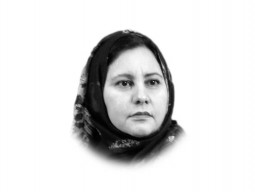
Many of the youth, including Burhan Wani, who has now been turned into an icon amongst his people, had not even been born in 1989-90 when a fierce battle erupted between the people of the Kashmir valley, later joined by jihadis from across the border, and Indian forces. There has been many a time that New Delhi has tried to bring down violence in Kashmir but for those who have grown up in an environment of bitterness, mistrust and humiliation, the war will never end. In any case, the Kashmir observers even in India didn’t think that Mehbooba Mufti’s tenure would be a smooth one for her or for New Delhi. It is now a new generation of Kashmiris going through estrangement with the Indian state.
However, a bigger problem is that the brutal treatment by the state is not about to end. In this age of the ‘war on terror’, states seem to have obtained greater sanction to use force. Burhan Wani, as the Kashmiri writer Basharat Peer has written in his piece in The New York Times, was not a real threat to the Indian state. Bitter from a personal humiliating encounter with the state, he had gone and hidden in the forest from where he tried to put up a small group together. He would post pictures on social media attired in army fatigues and with an AK-47. He would trend on social media, especially amongst the Kashmiri youth.
Facebook post sparks one-liner contest on what India is to Kashmiris
But then look around and see how impatient states get watching these images. From Pakistan, India and Sri Lanka, to the white police against blacks in the US, states and their narratives on patriotism are today so sanctimonious that they will shed blood all in the name of national security. The current war in Kashmir takes place in this new environment in which people do not have the right to fight and we do not make heroes out of those who rebel. The real tragedy that has happened with the current Kashmir struggle and its dejected youth is this age in which struggles are no more struggles but acts of terrorism. Over the past three decades, state apparatuses from around the globe and national security machines have played with the pedigree of protests. There were the days of Che Guevara, Laila Khalid and many other rebels. These struggles were secular and for independence, right of self-determination, or at best against forces of capitalism. A large part of the Third World, which had gotten new identities at the end of the Second World War, was still fighting battles against injustices planted by the colonial powers.
Something certainly changed at the end of the last century, particularly with the US war against the former Soviet Union in Afghanistan. Not that some of the older jihadis were not being trained in Pakistan before 1979, but a more concerted effort was made to change the genetic code of the struggle. The Afghans, who have a history of fighting invaders, would have fought anyway. But they were given a new language of war laced with religion. Jihad got redefined repeatedly to take the form it eventually did. It is now interpreted as nothing but terrorism.
A 'less familiar’ story about Kashmir with familiar faces
What this means for the Kashmir struggle is that in the hierarchy of nations, states that matter are averse to anything labeled as terrorism or which is linked with known terror groups. Thus, the various jihadi groups in Pakistan may not necessarily be doing the Kashmiri struggle a favour with their processions. Irrespective of the narrative popularised by the Indian state regarding this being threat of religious militancy, this is about people’s exhaustion with their conditions. Any struggle for self-determination acquiring a religious cover becomes dangerous even for those involved in it.
Within Pakistan, the jihadi groups and all those trying to gain public attention are very critical of the government not taking action. Notwithstanding that the current political dispensation is eager to improve links, there is not a lot it can do militarily. The last option was exhausted during the Kargil war. When asked during a DCC if the military could push further to capture the valley, General (retd) Musharraf had responded in the negative. Given the current international scenario, most of Pakistan’s international friends, including the Chinese or an older infatuation such as the US, would not recommend upping the ante in Kashmir through regular forces or non-state actors.
Why Indians are sharing this heartbreaking image of a classifieds page in Kashmir
Of course, this does not rule out using diplomatic options. The government must take up the matter bilaterally or even through institutional mechanisms such as the OIC, Saarc and the UN. For this, it must work on building its reliability. No matter what the government says about Islamabad not being isolated, international forums reverberate with echoes of Pakistan’s dual approach in fighting terrorism. Additionally, states, since they organise around their permanent interests and not ethics, seem to pay little attention to the Kashmir struggle. In fact, I am reminded of a conversation in Safma, Islamabad, about the issue of Pakistan’s need to recognise Israel. This was during the Musharraf days, and I was shouted down when I tried to remind the head of the organisation that states must consider ethical issues. Since a large issue with the Kashmir movement is the environment it is taking place in, Islamabad’s primary contribution should be to remind people about the exact nature of the movement; this being about people’s woes rather than terrorism, and to build pressure on the international community regarding its moral responsibility to protect humanity. Surely, vying for a moral position means Islamabad would have to reconsider how it treats its own people, but is there any other way to help a bleeding Kashmir?
Published in The Express Tribune, July 28th, 2016.
Like Opinion & Editorial on Facebook, follow @ETOpEd on Twitter to receive all updates on all our daily pieces.


1719211536-0/BeFunky-collage-(81)1719211536-0-165x106.webp)





1729685382-0/Untitled-design-(57)1729685382-0-270x192.webp)











COMMENTS
Comments are moderated and generally will be posted if they are on-topic and not abusive.
For more information, please see our Comments FAQ